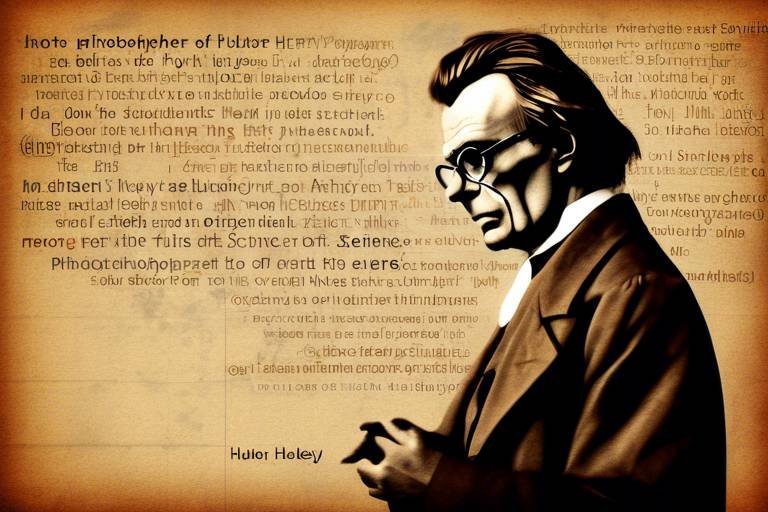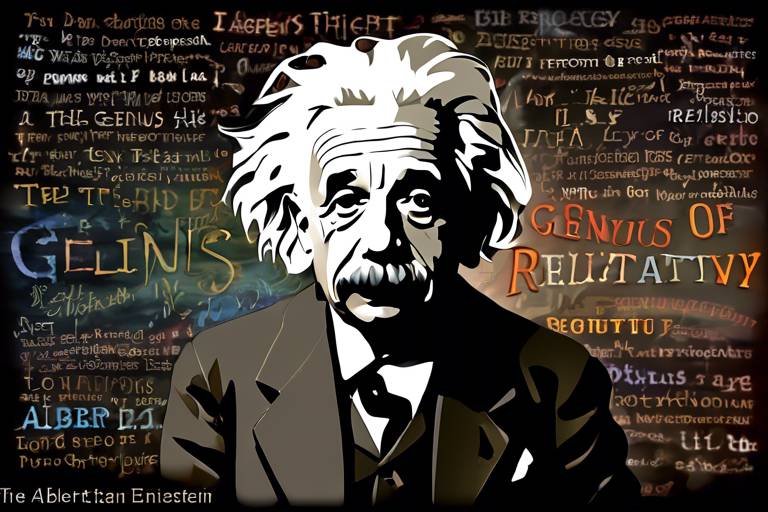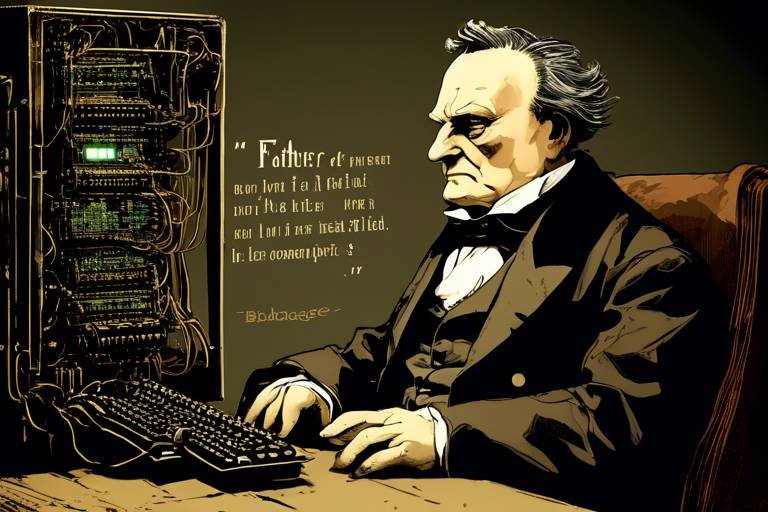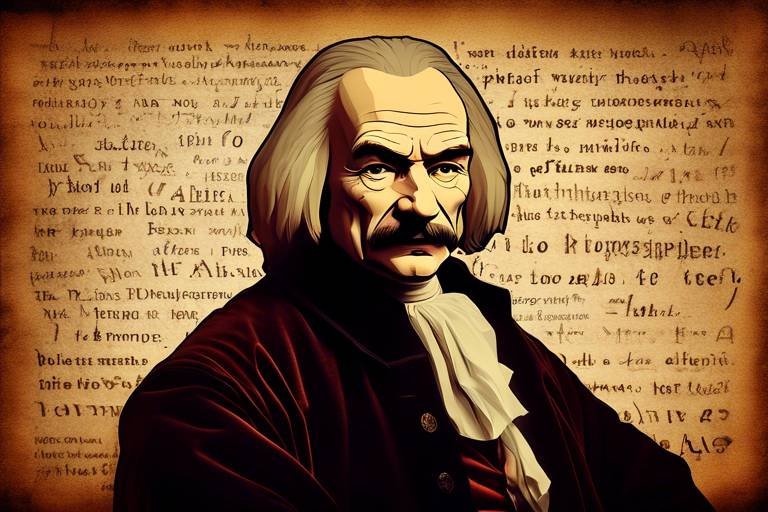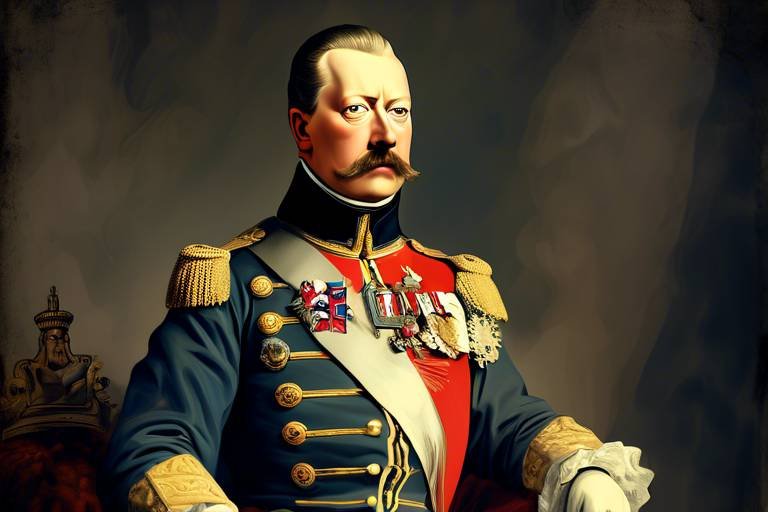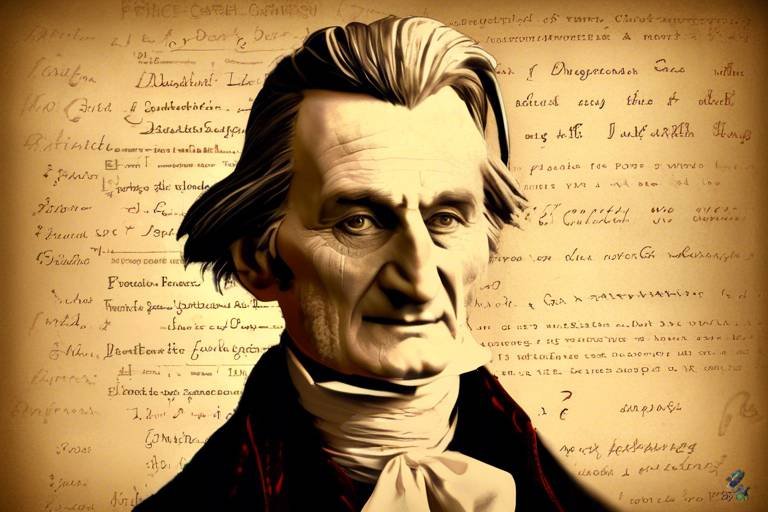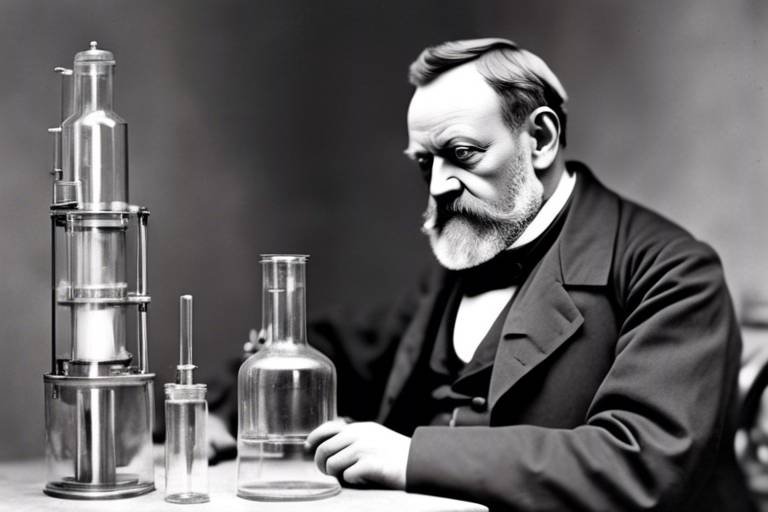Einstein: The Genius of Physics
Albert Einstein, the name synonymous with genius in the realm of physics, left an indelible mark on the scientific world with his groundbreaking theories and revolutionary insights. His work continues to shape our understanding of the universe, inspiring generations of physicists and thinkers.
From his humble beginnings in Germany to his iconic status as a Nobel Prize-winning physicist, Einstein's journey is a testament to the power of curiosity and relentless pursuit of knowledge. His early years were marked by a keen interest in the natural world, laying the foundation for his future explorations into the mysteries of the cosmos.
Central to Einstein's legacy is his theory of relativity, a concept that upended traditional notions of space, time, and gravity. The famous equation Emc2 encapsulates the essence of his theory, illustrating the interplay between energy, mass, and the speed of light in the universe.
Delving deeper into the fabric of reality, Einstein's work in quantum mechanics sparked intense debates and collaborations with fellow physicists. His investigations into the photoelectric effect, for which he was awarded the Nobel Prize, shed light on the dual nature of light and matter, challenging established scientific paradigms.
Beyond his scientific achievements, Einstein's influence extends into popular culture, with his iconic image and profound ideas permeating art, literature, and even advertising. His status as a cultural icon underscores the universal appeal of his intellect and the enduring impact of his contributions to science.
In exploring Einstein's life, work, and legacy, we uncover not just a brilliant mind but a visionary whose ideas continue to shape our understanding of the universe. His genius transcends the boundaries of time and space, inviting us to ponder the mysteries of existence and the limitless possibilities of human imagination.

Early Life and Education
Albert Einstein, often regarded as the epitome of genius in the world of physics, had a humble beginning that laid the foundation for his remarkable journey. Born in 1879 in Ulm, Germany, Einstein spent his early years in a middle-class Jewish family. His parents, Hermann and Pauline Einstein, provided a nurturing environment that encouraged his curiosity and love for learning.
During his formative years, Einstein displayed an intense interest in mathematics and science, often questioning the principles taught in school. His family later moved to Italy, where he continued his education, eventually enrolling in the renowned Swiss Federal Polytechnic School in Zurich. It was here that his passion for physics truly blossomed under the guidance of influential mentors.
Despite facing academic challenges and struggling with the rigid educational system, Einstein's determination and innovative thinking set him apart. He delved deep into theoretical physics, immersing himself in complex concepts and pushing the boundaries of conventional wisdom. His insatiable thirst for knowledge and unconventional approach to problem-solving marked the beginning of a revolutionary career in science.

Theory of Relativity
Albert Einstein's Theory of Relativity stands as a monumental achievement in the realm of physics, forever altering our understanding of the universe. This revolutionary theory, formulated by Einstein in the early 20th century, comprises two main components: special relativity and general relativity. Special relativity, introduced in 1905, redefined the concepts of space and time, proposing that they are intertwined in a four-dimensional continuum known as space-time.
One of the most iconic aspects of Einstein's theory is the famous equation Emc^2, where energy (E) is equal to mass (m) times the speed of light (c) squared. This equation, derived from special relativity, demonstrates the profound relationship between energy and mass, revealing that even a small amount of mass can be converted into a tremendous amount of energy.
General relativity, developed by Einstein a decade later, delves into the nature of gravity and its effect on the curvature of space-time. According to this theory, massive objects like planets and stars warp the fabric of space-time, causing objects to move along curved paths in the presence of gravity.
Through the theory of relativity, Einstein fundamentally transformed our perception of the cosmos, challenging conventional notions of space, time, and gravity. His groundbreaking ideas have paved the way for numerous scientific advancements and continue to inspire generations of physicists to explore the mysteries of the universe.
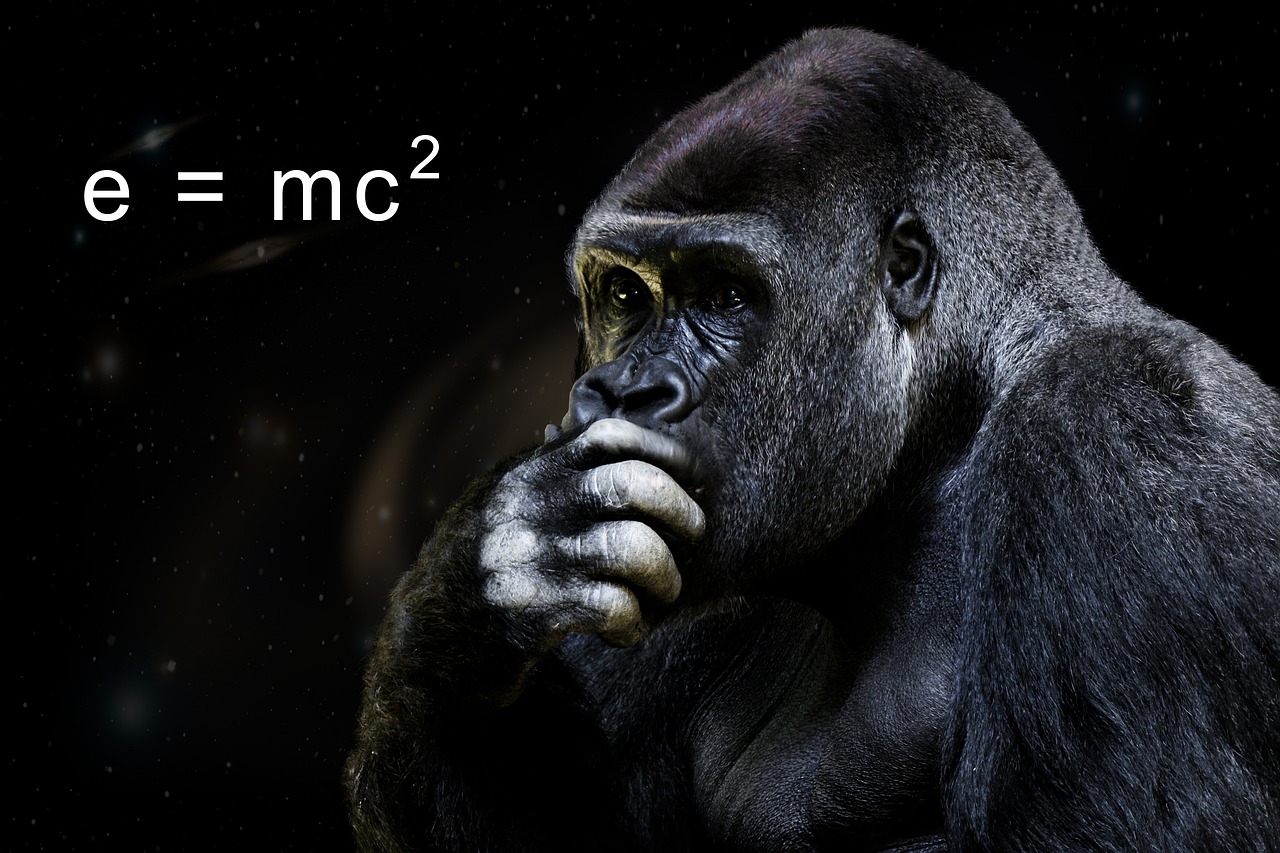
E
The famous equation Emc^2 is a cornerstone of Albert Einstein's theory of relativity. This equation, which relates energy (E), mass (m), and the speed of light (c), revolutionized our understanding of the universe. By demonstrating the equivalence of mass and energy, Einstein showed that matter and energy are different forms of the same fundamental entity. This concept challenged traditional views of physics and paved the way for groundbreaking discoveries in nuclear energy and particle physics. The implications of Emc^2 extend far beyond the realm of theoretical physics, influencing diverse fields such as cosmology, engineering, and even philosophy.

Space-Time Continuum
The is a concept introduced by Albert Einstein as part of his theory of relativity, reshaping our understanding of the very fabric of the universe. Imagine the universe not as a static three-dimensional space but as a dynamic four-dimensional structure where time and space are intertwined, forming a continuum. This revolutionary idea suggests that space and time are not separate entities but rather interconnected dimensions that bend and warp in the presence of mass and energy.
According to Einstein's theory, massive objects like stars and planets create distortions in the space-time continuum, causing what we perceive as gravity. Just as a heavy ball placed on a stretched fabric creates a depression, massive celestial bodies curve the fabric of space-time around them, influencing the path of objects moving through this warped space.
This concept of space-time continuum not only challenged traditional Newtonian physics but also laid the foundation for understanding phenomena like black holes, gravitational waves, and the expanding universe. It is a profound insight that unifies space and time into a single dynamic entity, providing a framework to explain the mysteries of the cosmos.
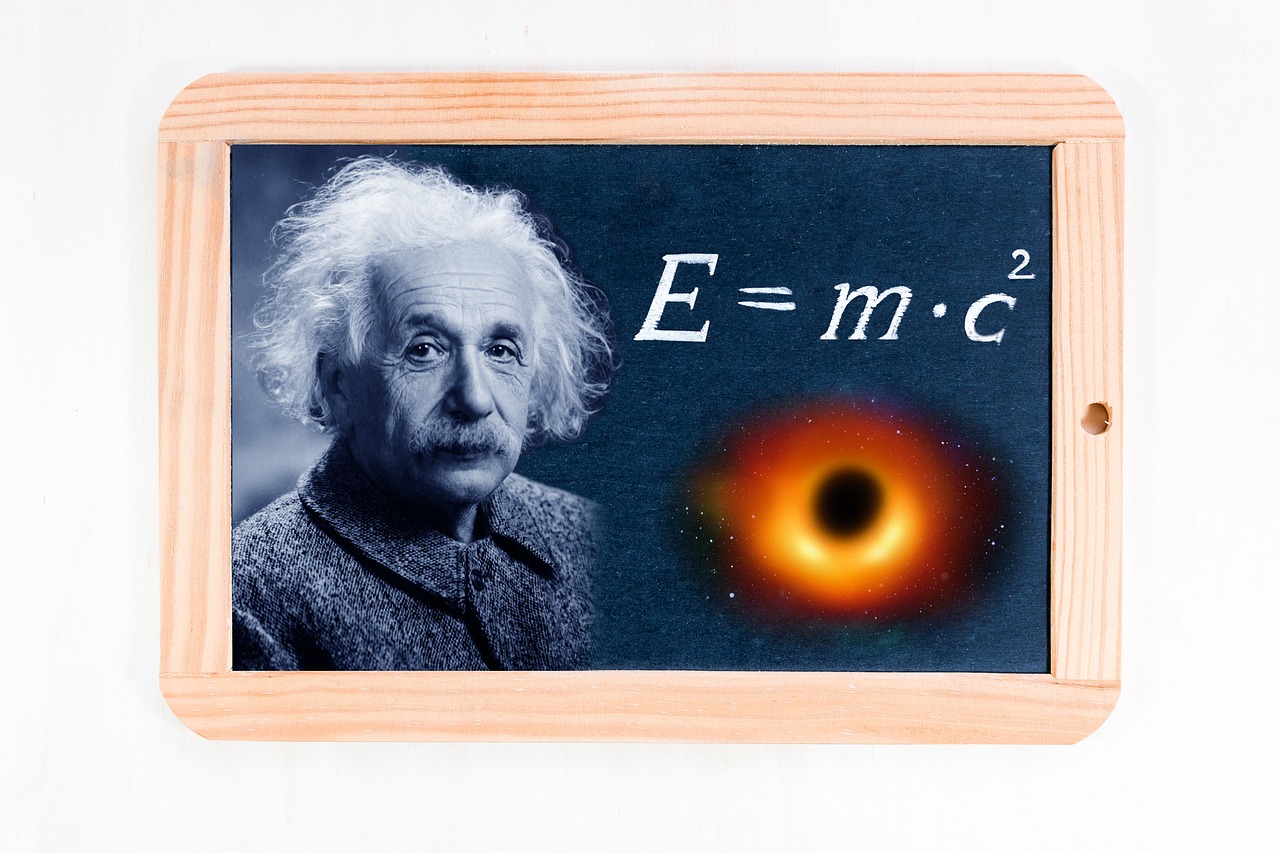
Quantum Mechanics
Quantum Mechanics is a fascinating branch of physics that delves into the behavior of particles at the smallest scales, challenging our traditional understanding of reality. Albert Einstein, despite his monumental contributions to physics, had a complex relationship with quantum mechanics. His debates with physicists like Niels Bohr highlighted the foundational disagreements in interpreting the quantum world. Einstein famously remarked that "God does not play dice with the universe," expressing his skepticism towards the probabilistic nature of quantum mechanics.
One of Einstein's significant contributions to quantum mechanics is his work on the photoelectric effect, which earned him the Nobel Prize in Physics in 1921. This phenomenon demonstrated the particle-like nature of light and laid the groundwork for the development of quantum theory. By proposing that light consists of discrete packets of energy called photons, Einstein revolutionized our understanding of the interaction between light and matter.
Einstein's insistence on deterministic principles clashed with the inherent randomness of quantum mechanics, leading to philosophical debates that continue to shape the field today. His thought experiments, such as the famous EPR paradox, challenged the completeness of quantum theory and spurred further investigations into the nature of reality at the quantum level.

Photoelectric Effect
One of Albert Einstein's most significant contributions to physics is his work on the photoelectric effect, a phenomenon in which electrons are emitted from a material when it is exposed to light. This groundbreaking research by Einstein laid the foundation for the development of quantum theory and earned him the Nobel Prize in Physics in 1921.
The photoelectric effect challenged classical physics by demonstrating that light behaves as both a wave and a particle, known as photons. Einstein proposed that light consists of discrete packets of energy, or photons, which interact with electrons in the material, causing them to be ejected. This theory helped explain why certain metals emit electrons when exposed to light of a specific frequency, rather than intensity, as predicted by classical wave theory.
Moreover, Einstein's work on the photoelectric effect had practical applications in technology, leading to the development of devices such as photodetectors and solar cells. By understanding how light can induce the emission of electrons, scientists were able to harness this phenomenon for various inventions and advancements in the field of optics and electronics.

Legacy and Influence
Albert Einstein's legacy in the world of physics is nothing short of monumental. His groundbreaking work, especially his theory of relativity, has had a profound influence on the way we perceive the universe. Einstein's contributions not only revolutionized physics but also left a lasting impact on scientific thought and cultural imagination.
One of the key aspects of Einstein's legacy is his emphasis on the interconnectedness of space and time. His theory of relativity introduced the concept of the space-time continuum, where space and time are not separate entities but rather intertwined dimensions. This idea fundamentally changed our understanding of the fabric of the universe, challenging conventional notions of reality.
Moreover, Einstein's work continues to inspire new generations of scientists and thinkers. His relentless pursuit of knowledge and his willingness to question established beliefs serve as a model for intellectual curiosity and critical thinking. Einstein's legacy serves as a reminder of the power of imagination and the importance of pushing the boundaries of human knowledge.
Furthermore, Einstein's influence extends far beyond the realm of physics. His iconic image, with unruly hair and a thoughtful expression, has become a symbol of genius and intellectual prowess. References to Einstein can be found in various forms of popular culture, from movies and TV shows to advertisements and merchandise.

Popular Culture References
Albert Einstein, with his iconic wild hair and thoughtful expression, has become a symbol of intelligence and creativity in popular culture. His image and ideas have transcended the realm of physics to influence various aspects of society, from art to advertising. Countless movies, TV shows, and books have referenced Einstein, portraying him as a quirky genius whose intellect is both awe-inspiring and enigmatic.
In the world of art, numerous paintings and sculptures pay homage to Einstein, capturing his essence as a visionary thinker who reshaped our understanding of the universe. His likeness has been immortalized in various forms, serving as a reminder of the power of human imagination and scientific discovery.
Furthermore, Einstein's theories and quotes have been widely used in advertising campaigns to convey messages of innovation and intellect. His famous equation, Emc^2, has been employed to symbolize the potential for transformative change and the interconnectedness of energy and matter.
Overall, Einstein's presence in popular culture serves as a testament to his enduring legacy and the universal appeal of his ideas. Whether portrayed as a quirky genius or a symbol of intellectual curiosity, Einstein continues to inspire and captivate audiences across the globe.
Frequently Asked Questions
- What were Albert Einstein's major contributions to physics?
Albert Einstein made significant contributions to physics, including his theory of relativity, which revolutionized our understanding of space, time, and gravity. He also worked on the photoelectric effect, quantum mechanics, and the famous equation Emc^2, which relates energy to mass and the speed of light.
- How did Einstein's theory of relativity change our understanding of the universe?
Einstein's theory of relativity introduced the concept that space and time are interconnected and can be affected by gravity. It also showed that the laws of physics are the same for all observers, leading to new insights into the nature of the universe and the behavior of objects moving at high speeds.
- Why is Einstein's Emc^2 equation so famous?
The equation Emc^2 is famous because it demonstrates the equivalence of mass and energy, showing that a small amount of mass can be converted into a large amount of energy. This concept has profound implications for nuclear energy, particle physics, and our understanding of the fundamental nature of the universe.
- What is the significance of Einstein's work on the photoelectric effect?
Einstein's work on the photoelectric effect provided crucial evidence for the quantum theory of light and helped establish the concept of photons. This research laid the foundation for the development of quantum mechanics and earned him the Nobel Prize in Physics in 1921.
- How has Albert Einstein's legacy influenced popular culture?
Albert Einstein's iconic image, along with his groundbreaking ideas, has permeated popular culture in various forms, including movies, literature, art, and advertising. His status as a scientific genius and cultural icon continues to inspire creativity and curiosity worldwide.


